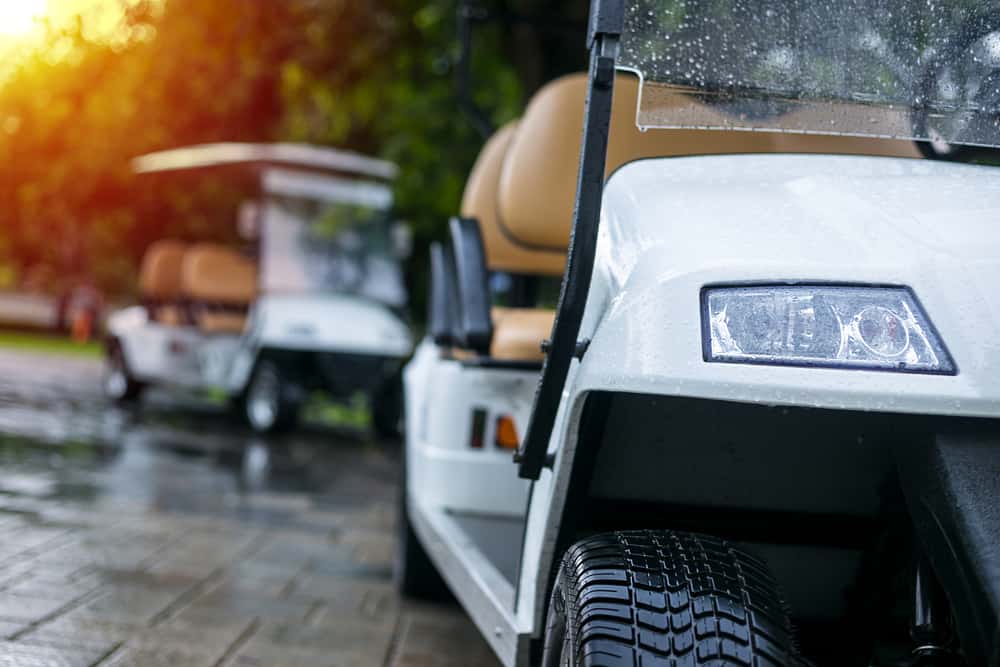
Although your standard golf cart is designed to be tough enough to withstand various types of damage, water can be a real problem.
It’s true that your cart should be able to handle a little bit of water on its exterior without any trouble, but it may end up getting too wet if you aren’t careful.
This problem can cause serious damage to various areas of your cart and may cause it to fail to run properly for a long time.
In some cases, your carts may even stop running entirely, which is a real concern if you want to be able to use your cart at any time.
Therefore, it is important to understand just what happens when your cart gets wet and fails to run and what you can do to prevent this issue.
It is also important to know the level of wetness your cart can tolerate before it runs into operational problems that may set you back a good amount of money.
Your Wet Golf Cart Won’t Run: What is Happening?
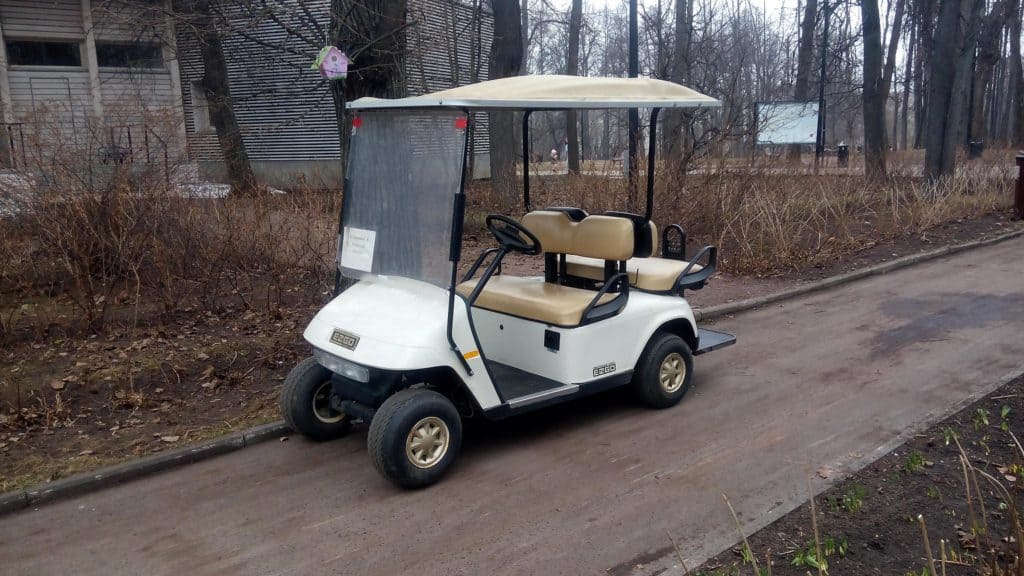
When your wet golf cart won’t run no matter what you do, there are a handful of possible problems that may be impacting its operation.
These include water getting into your fuel (gas carts only), water shorting out your battery connections, water getting into your F/R switch, dirt getting into various lines of the cart, and much more.
All of these issues can occur at any time when your cart gets wet, though they are more likely if you aren’t careful about how wet your cart gets.
Remember: A wet cart isn’t automatically a damaged cart and operational problems aren’t an automatic concern just because a little water gets on the side of your cart.
That said, sustained exposure to water will almost always cause some problems with your cart and need to be taken as seriously as possible.
Let’s examine a few of the most common fixes of these problems to see what you can do to keep your cart running as efficiently as possible.
Each of these solutions is designed for specific problems and will help to keep your cart running as smoothly as possible.
Try them out in this order to get an idea of what to expect and to ensure that you can fully handle the unique demands that they put on you as a cart owner.
If you don’t feel comfortable with any of these steps due to a lack of experience, or for any reason, you can always contact a cart repair expert.
However, the average cart owner shouldn’t have too much difficulty fixing up their golf cart if it gets wet and should be able to handle this process as smoothly as possible without help.
In some cases, though, you may want to have a second pair of hands and eyes with you during these repairs to help cut back on the risk of making errors that could impact your cart even further.
A. Blow Dry Your Golf Cart Interior
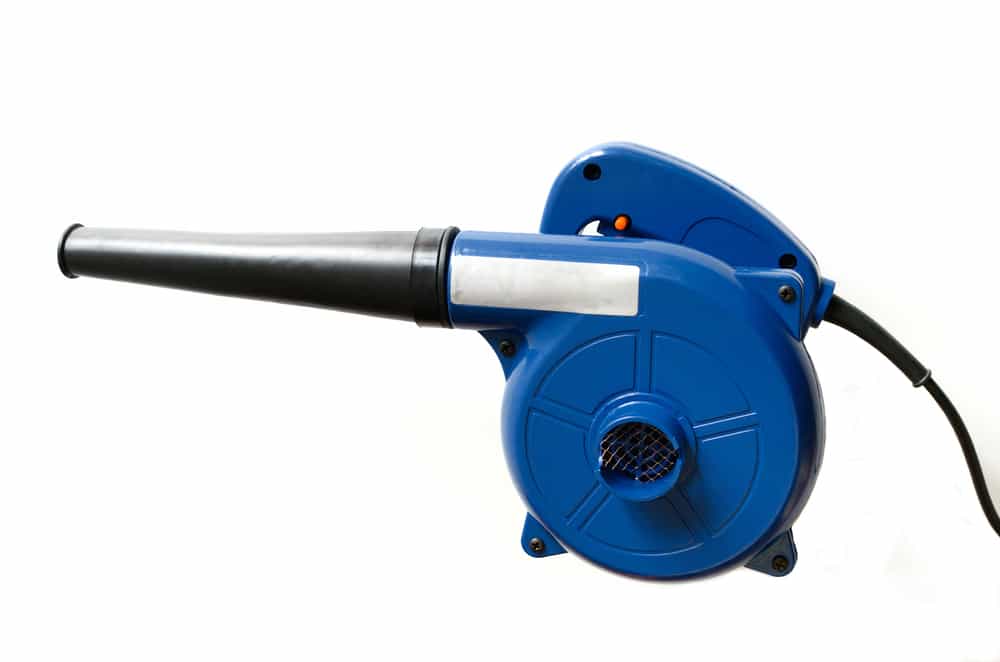
The first thing you’ll do when your golf cart stops working is blow dry its interior to eliminate unnecessary water that may be lingering throughout.
This process often helps to eliminate the problems triggering cart malfunction or at least helps you prepare for them properly.
The blow-drying process is a fairly simple one and includes the following steps that just about any cart owner should be able to handle:
- Place your wet golf cart outside on a warm and sunny day.
- Put bricks behind and in front of your wheels to prevent movement.
- Shift your cart into neutral to keep it from wiggling.
- Use an air blower to evaporate any water on the outside and inside of your cart.
- Pay close attention to delicate areas, like wires, to avoid serious damage.
- Wipe down delicate areas with a fabric cloth to keep them safe.
- Use low-powered puffs of air on wires to dry them off.
- Move your cart somewhere warm and dry, such as a garage.
- Check on your cart after about a day to see if it is dry.
- Try to start it up to see whether this process worked for you.
If you are extremely lucky and your golf cart’s interior wasn’t too severely damaged by water, your cart may start up again.
We’re not going to lie to you, though, by claiming that these steps are flawless, as there’s a good chance they’ll only do so much to help you out here.
As a result, you need to pay attention to the following processes to ensure that you smoothly handle every step here.
B. Replace Your F/R Switch
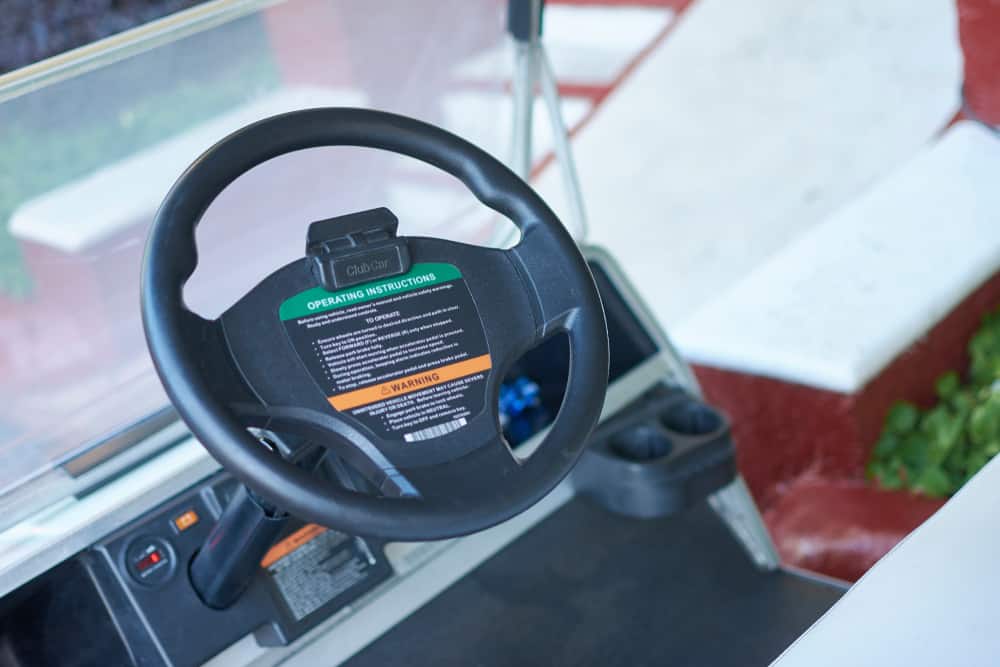
When your F/R switch gets damaged by water or in any other way, there’s a good chance that your cart will end up failing to operate smoothly.
That’s because this switch is so critical to how your cart operates and can cause serious problems if it malfunctions.
If your F/R switch is the problem and you want your cart to start operating smoothly again, you need to follow these simple replacement steps:
- Blow dry your F/R switch case as much as possible to get water out.
- Disconnect your battery at the source to avoid serious shocks.
- Remove the connecting screws around the switch to access it with ease.
- Disconnect the wires on the switch and remove it from the cart.
- Dry out the interior where the wires connect to prevent shocks or other dangers.
- Connect your new F/R switch to these wires and set it in the proper place.
- Hold the switch down by screwing it back into place with relative ease.
At this point, you can try to turn on your golf cart to see if this process helped you out or if your cart still won’t run smoothly.
In many cases, this process will help to manage this issue and ensure that your golf cart is as safe as possible from damage.
However, there are a handful of other steps that you can take to ensure that you are fully satisfied and to make sure that your cart is as strong as possible.
C. Fix Your Wiring System
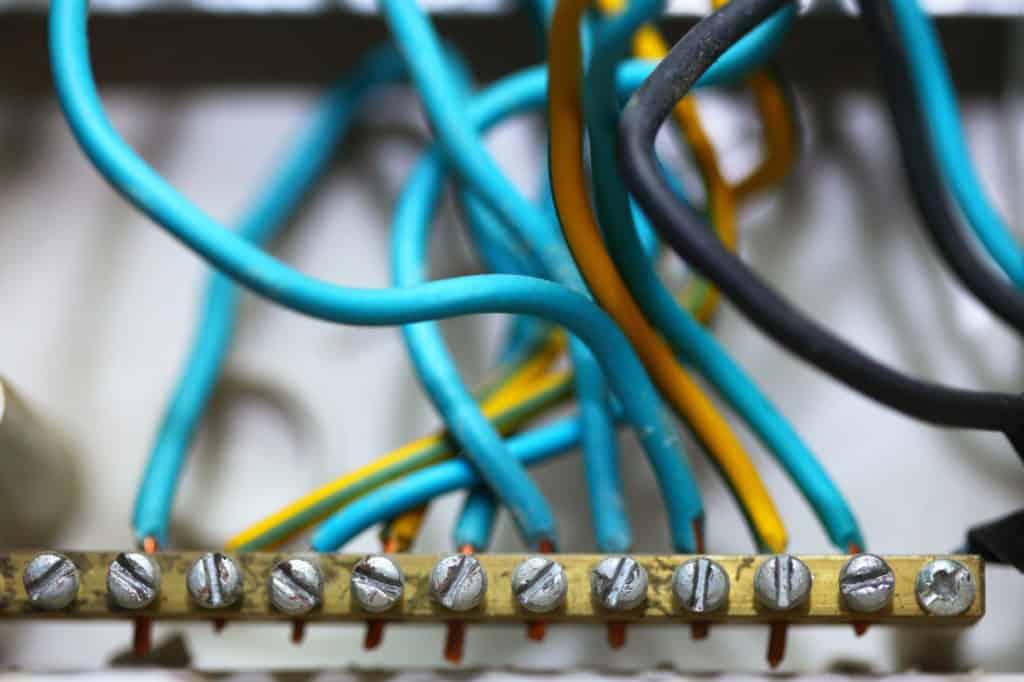
The wiring of your golf cart is likely to get very damaged by water if it is exposed too heavily, which may require you to perform simple repair steps:
- Remove the electrical box cover and use compressed air to dry it out.
- Pull out the spark plug (if you have one) and change it for a new one.
- Remove any frayed wires that may be present throughout your system.
- Replace these damaged wires with new and appropriate types.
- Take out any other damaged components, like your solenoids.
- Put new electrical components in the system to replace these old ones.
If these steps feel uncomfortable to you, please don’t hesitate to contact a professional who can ensure that your wires are replaced properly and efficiently.
Getting an expert to help will ensure that you get the best results without causing any problems to your cart’s operation.
D. Repair Your Fuel System
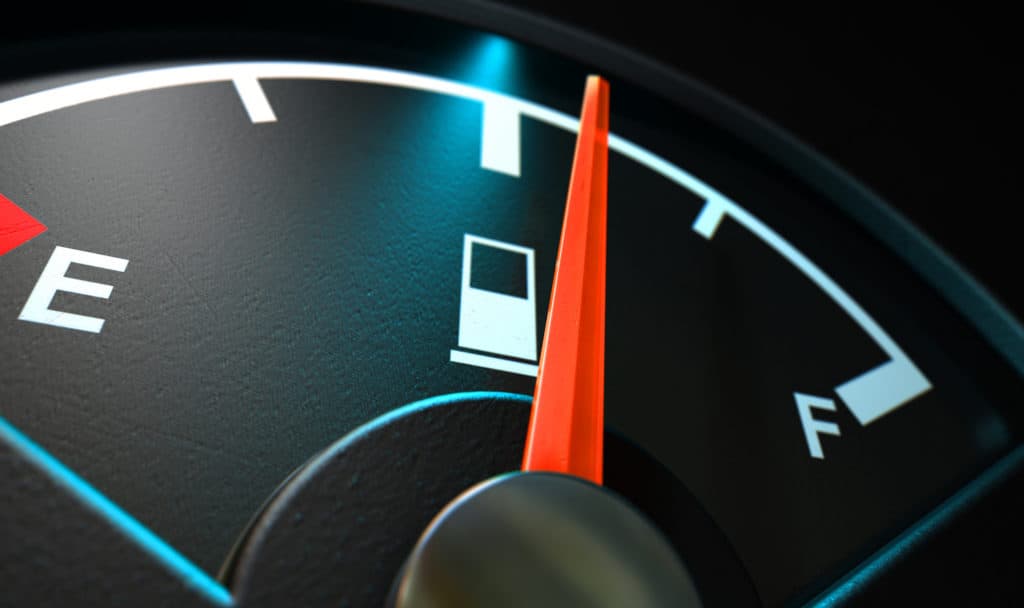
If you have a gas-powered golf cart that refuses to run after getting wet, there’s a very strong chance that your fuel system may have been heavily impacted by this water-related problem.
As a result, it is important to take several steps to protect your cart’s fuel system and to do what you can to get it back in full operation.
Just a few steps that you can take to keep your golf cart running well after getting wet include the following simple repairs:
- Replace your fuel valve if it refuses to close after getting dirty in the rain.
- Remove all of the fuel in your engine and add a system cleaner if the cart’s engine is dirty.
- Check for damage to the float pin and replace this if it is not reading your fuel level properly.
- Inspect the solenoid and test it with a voltmeter to see if it is operating properly.
- Replace the main controller if it got wet and is triggering any serious operational problems.
- Use an air blower throughout the fuel system to dry it out as much as possible.
- Consider replacing your fuel system if this step is necessary for your cart.
These steps may be a little hard for some cart owners to handle, especially if they have minimal experience with repairs or feel uncomfortable doing mechanical work.
Others may be quite expensive, such as replacing the fuel system, but may be worth it if your cart is new enough and you have it insured.
Ultimately, the choice will depend on whether you want to spend a bit of money on this process, how comfortable you feel doing these repairs, and any other element that affects these repairs.
How Wet Can Your Cart Get?
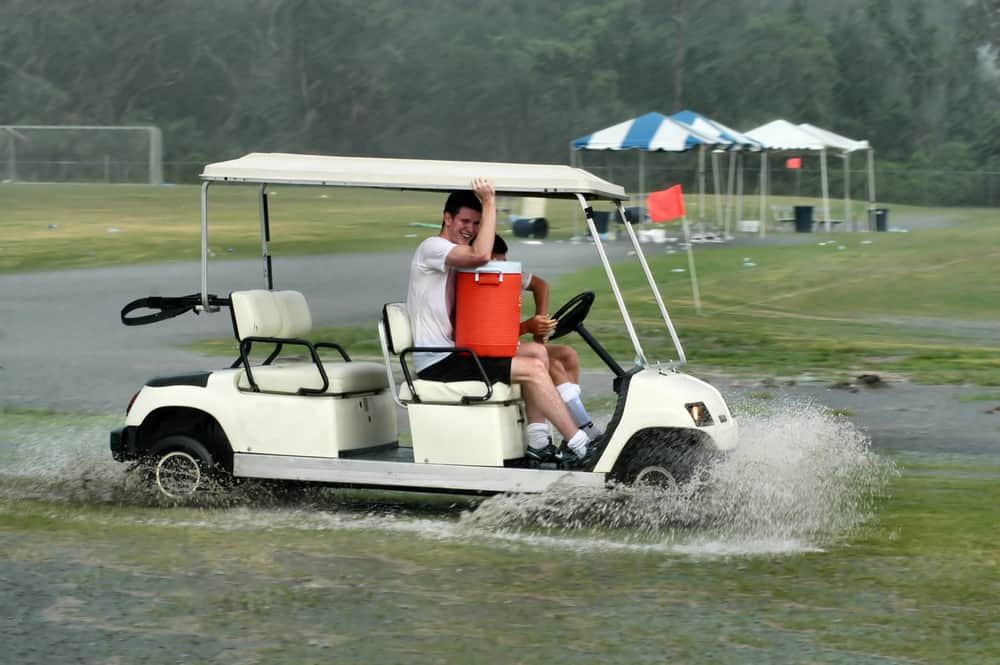
As a cart owner, you deserve to understand just how wet you can get your cart before you’re likely to start noticing operational problems.
The answer to this question may be surprising because some golf carts can resist damage for a long time, depending on their design and the type of wetness you experience.
Others may experience extensive damage almost immediately after exposure and end up needing to be fixed or repaired using any one of the steps above, depending on the type of damage that it experiences.
In this section, we’ll take a look at a few common scenarios that may end up getting your cart wet, such as leaving it out in the rain or giving it a wash.
Very few other scenarios exist in which your cart will get wet enough to be damaged, although there are a few others that we’ll touch on to ensure you have all the information you need.
Make sure you read through these sections and take any proactive steps necessary to prevent severe and long-term damage to your golf cart through unnecessary and sustained wetness.
Washing Your Cart: Is This Safe?
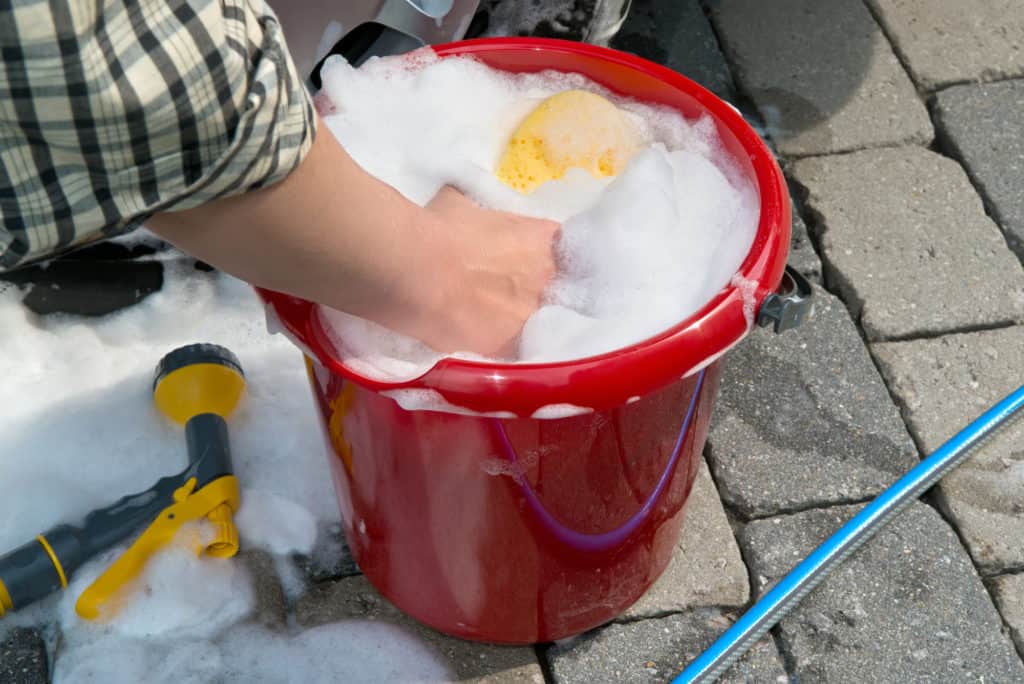
Washing your golf cart is 100 percent safe and shouldn’t cause any damage to its operation, as long as you are careful about the process you use.
For example, you shouldn’t take a golf cart through an automatic washing machine, such as a car wash process.
Though this step may break apart a lot of debris and dirt and make your cart quite clean in some ways, it will also be much more likely to damage your cart’s wiring or other elements.
Instead of this type of washing, you need to hand wash it with a soft sponge, a gentle detergent, and without any power-wash tools.
Even a hose is probably too much for your cart, though a low-running and low-speed garden hose is probably not that big of an issue.
Try to cover up areas where water may end up running into your cart, such as taping up holes in the surface that lead to wiring areas.
You also need to make sure that you don’t wash your cart excessively because this may slowly wear away its exterior paint job.
A good rule of thumb is to wash your cart no more than once a week when in regular use and once a month when it is in storage.
However, if your cart is seriously muddy due to riding conditions, you need to wash this mud off right away to avoid problems.
In some cases, mud might even work its way up into various areas of the golf cart and cause damage that may trigger poor operational capabilities.
Someone Left Their Cart Out in the Rain
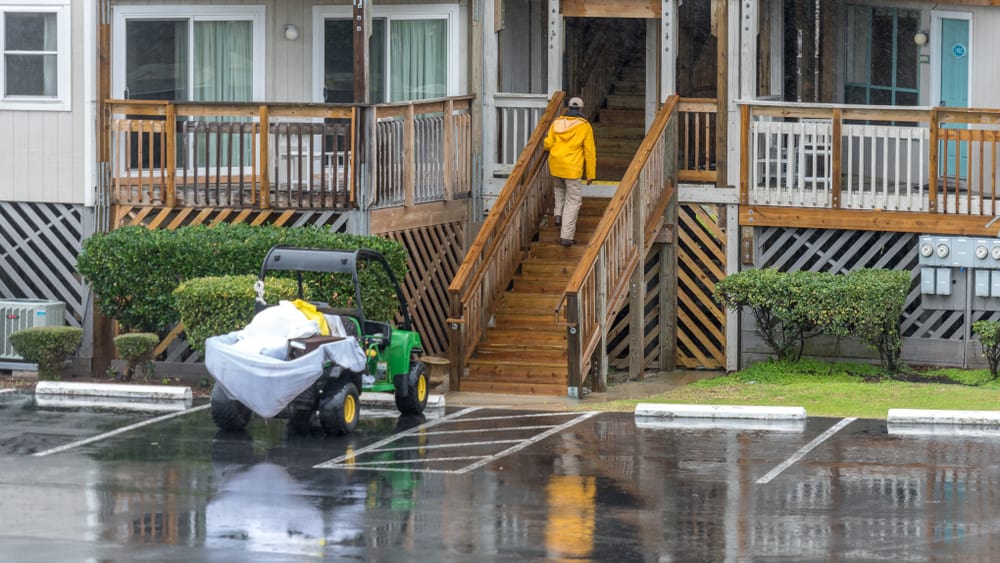
While a standard golf cart is capable of withstanding a little bit of rain and wetness on its exterior, too much exposure can be a real problem.
For example, excessive rain when you’re driving your cart will bounce back up under the cart and potentially impact its operation.
The rain may also get into other areas on the surface of the cart and cause serious long-term problems that may cause your cart to fail.
Essentially, you want to avoid riding your cart in the rain whenever possible and never, ever, leave it outside in the rain overnight.
That water will collect throughout the body of your cart, and as the temperature gets colder, it may expand and cause other issues with your cart.
If you have to leave your cart outside for any reason, always place a tarp around it even if you aren’t anticipating rain.
However, it is probably a better idea to just put your golf cart in a storage shed or a garage to avoid this type of long-term problem.
Building a small shed to house your cart will help to minimize the dangers of water exposure, allow your cart to stay out of the weather, and keep it safe from theft.
A good shed also lets you protect it from various types of pests, like mice, that may make homes in your cart’s body.
Complete Water Immersion: Is This Even Possible?

Let’s examine an unlikely but possible scenario that may cause your golf cart to become completely immersed in water and trigger severe damage to its interior.
How is this situation even possible and what can you do to prevent it or repair your cart if it does occur at any time?
Let’s say you’re riding your cart on a golf course near a pond and you’re riding a little too fast for the conditions.
You may end up slipping on the grass and barreling towards the pond with no time to correct your dangerous trajectory.
When this happens, your cart may end up fully immersed in pond water and will almost assuredly end up getting very damaged.
Avoiding this problem is fairly easy, as you can just stay away from ponds or other water-based areas to keep yourself safe.
As for repairs, that will probably vary depending on the severity of the damage and how badly it has spread through your cart.
As your cart is going to be pretty severely damaged in most cases, you may end up having to replace almost all of its electrical system.
In some cases, you may find that you just need to total your cart—which is why an insurance policy is a wise choice—and just buy a new one.
The costs of repairing a cart that is this damaged may be far too high and not worth the amount of difficulty it will cause you.
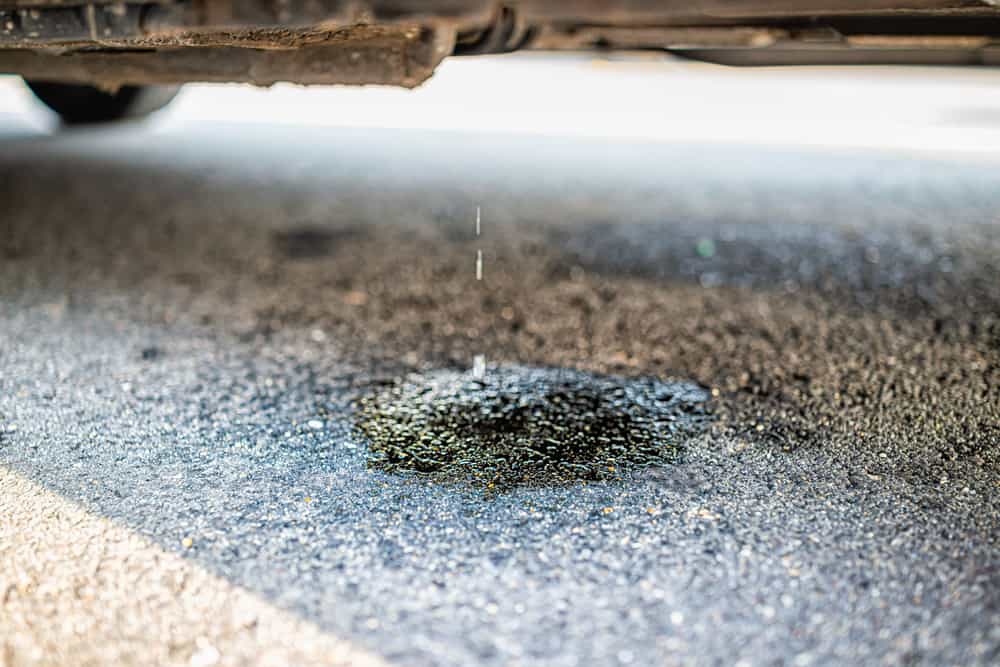
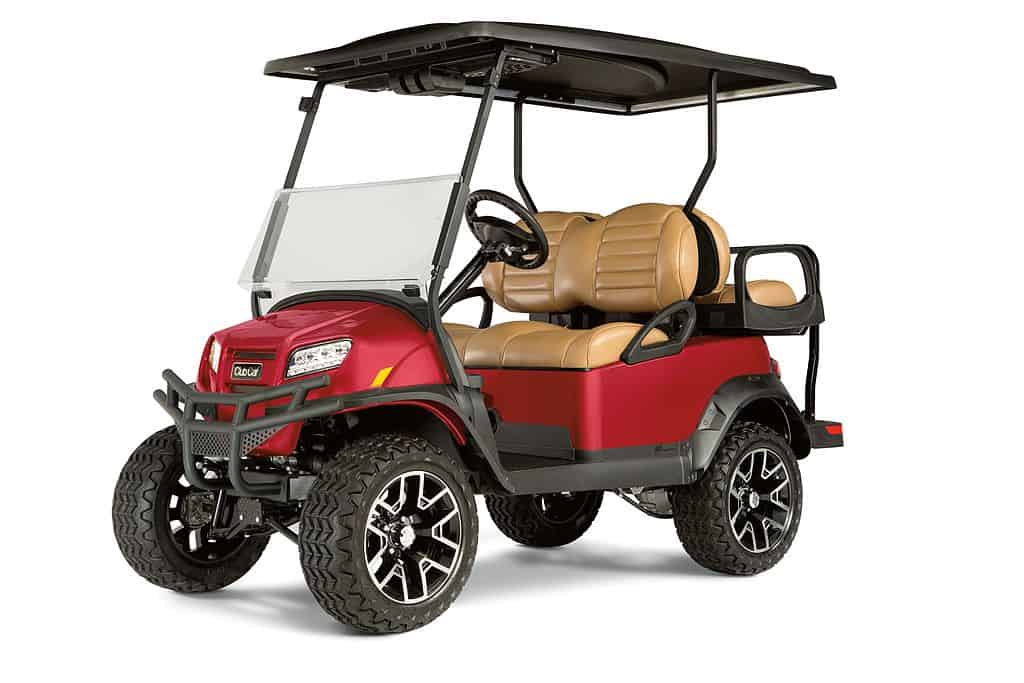
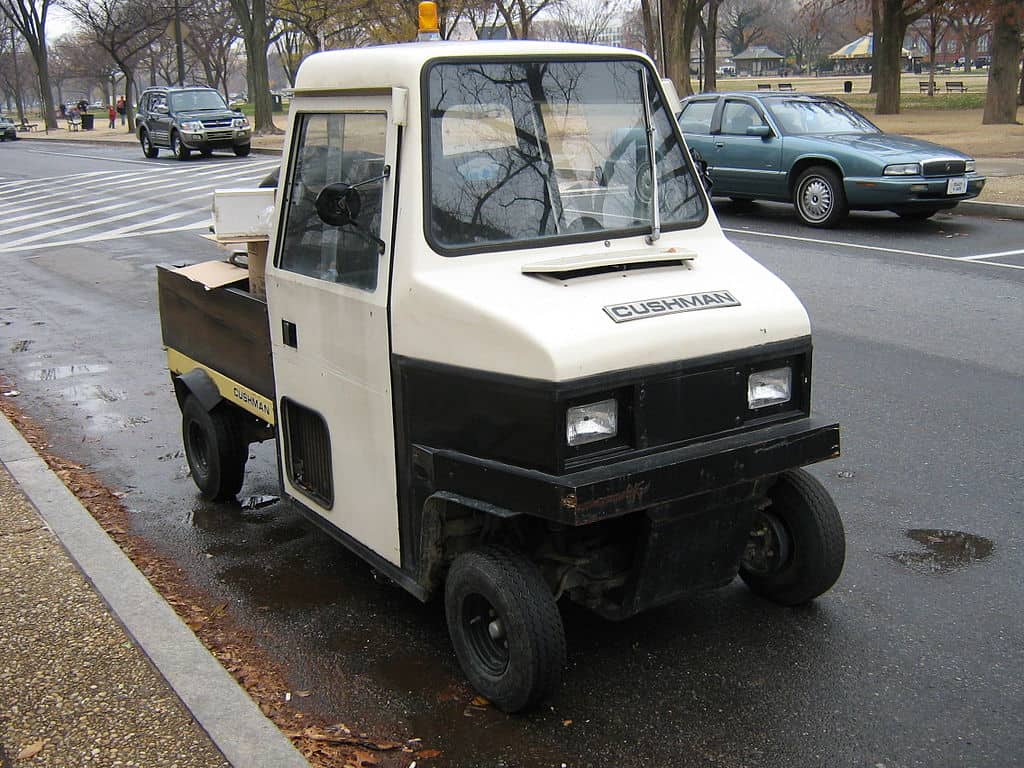
Leave a Reply